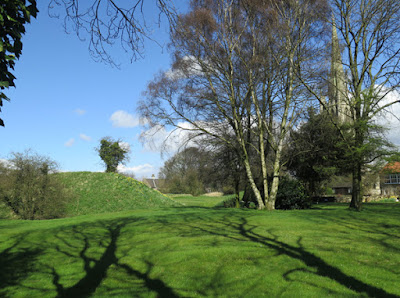 |
| The Anglo-Saxon doorway at All Saints church |
When preparing an itinerary to visit various mediaeval churches set on or near to the Rotherham Red sandstone - having fully investigated St. Helen's church in Treeton - I was interested to discover that those at Todwick, Wales and Aston possess certain features that suggest that they could pre-date the Norman Conquest of Britain and All Saints church in Laughton-en-le-Morthen clearly has an Anglo-Saxon origin.
 |
| Anglo-Saxon and Perpendicular Gothic style architecture |
Although set on an outlier of the Cadeby Formation, with various limestone quarries indicated on old maps and with the main outcrop of the Magnesian Limestone nearby, the Anglo-Saxon north doorway is constructed in what I always assumed to be Rotherham Red sandstone - the nearest source of which is more than 3 km away; however, looking more closely, the flame red stone used for a pilaster would not be considered typical of this distinctive variety of the Mexborough Rock.
 |
| Details of the masonry to the north doorway |
Compared to ancient doorways that I have seen all around England, its construction is extremely crude - with little attention paid to the shaping of the individual stones – and its style strongly contrasts with the Norman doorway that has been built within it.
 |
| A general view of the north elevation of All Saints church |
A stone's throw away from All Saints church, there are also the remains of a motte and bailey castle built by Roger de Busli - who was given this manor after the Norman conquest in 1066 - and which is believed to have been built on land previously owned by Earl Edwin of Mercia, the brother in law of King Harold Godwineson.

No comments:
Post a Comment